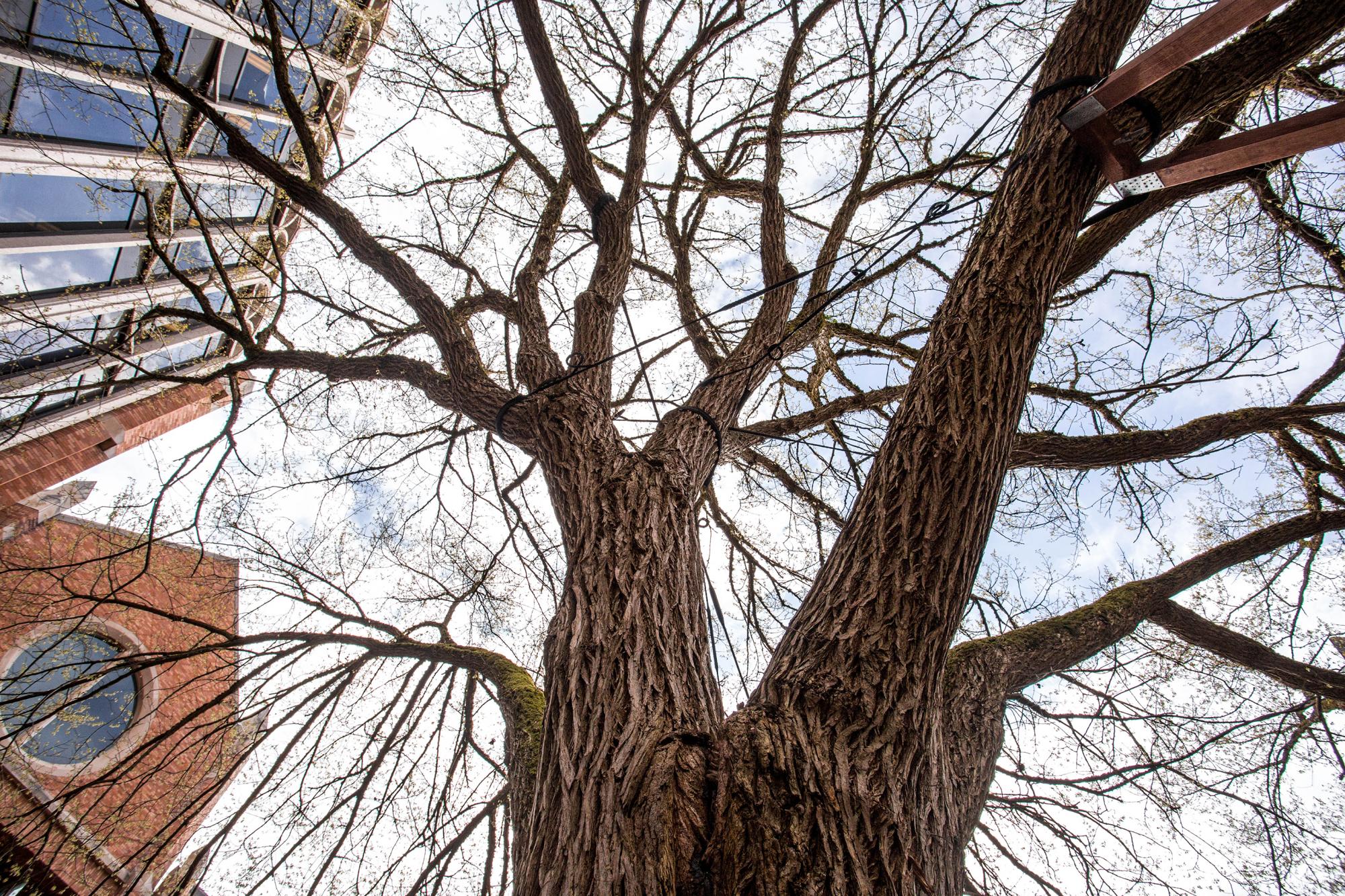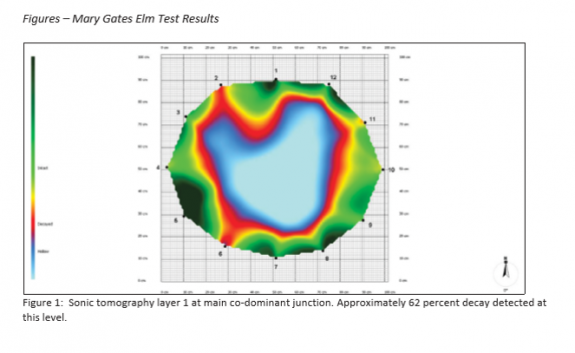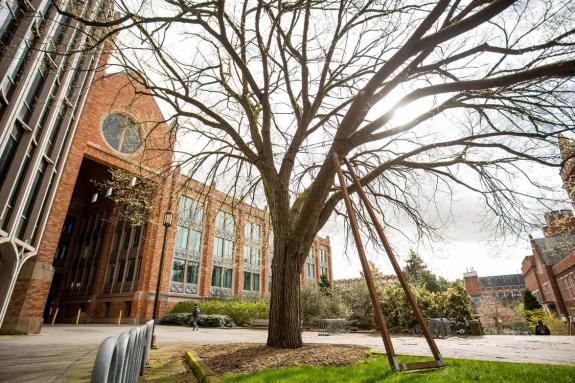Campus tree removal

An American elm tree is currently being removed from outside of Suzzallo/Allen Library. The elm tree has been supported by cobra cables, threaded metal rods, and bolts. The tree is being removed by Grounds Management because of decay.
This past weekend outside of Suzzallo and Allen Libraries, Grounds Management began taping off an American elm tree that could pose a risk to campus safety.
To see if the elm tree was a safety hazard, the elm tree had its own “tree sonogram” conducted. The results showed the elm is currently at 62 percent decay, meaning the tree is susceptible to cracking and splitting. It’s a rule of thumb for campus arborist Sara Shores that when the tree hits 2/3 decay, steps need to be taken to ensure the tree does not pose a hazard to campus.
Grounds Management previously added cobra cables to help prevent a catastrophic failure. Grounds also inserted threaded metal rods in three locations, which were drilled through the entire tree. The bolts on the rods can be seen on the exterior of the tree. Now, the tree has begun to grow around the bolts.

An American elm tree outside of Suzzallo Library in Seattle, Wash. is supported by cobra cables, threaded metal rods, and bolts.
If the tree is left alone, the percentage of decay will continue to grow. Removing the elm tree, which is near a high foot traffic area outside of Suzzallo, was determined by Shores to be the best option.
After campus trees are taken out from their original locations, they have potential to be used for the Grounds Management’s salvage wood program. The salvage wood program takes old tree remnants from construction projects and decaying trees to make them into window frames, tables, benches, and other useful items for campus.
Many trees that are removed from campus are eventually replaced in the same or different location. After the American elm is removed, a new tree will be planted closely to the original elm location.
Shores estimates the American elm is approximately 40 to 50 feet tall, and around 50 years old. The elm trees on campus can live to be over 100 years old, but beetles that spread Dutch Elm disease have been found within 0.3 miles of the tree. Dutch Elm disease specifically affects American elms, killing branches and eventually spreading to the entire tree. Grounds will be able to determine the age and height of the tree once they begin the removal process.





